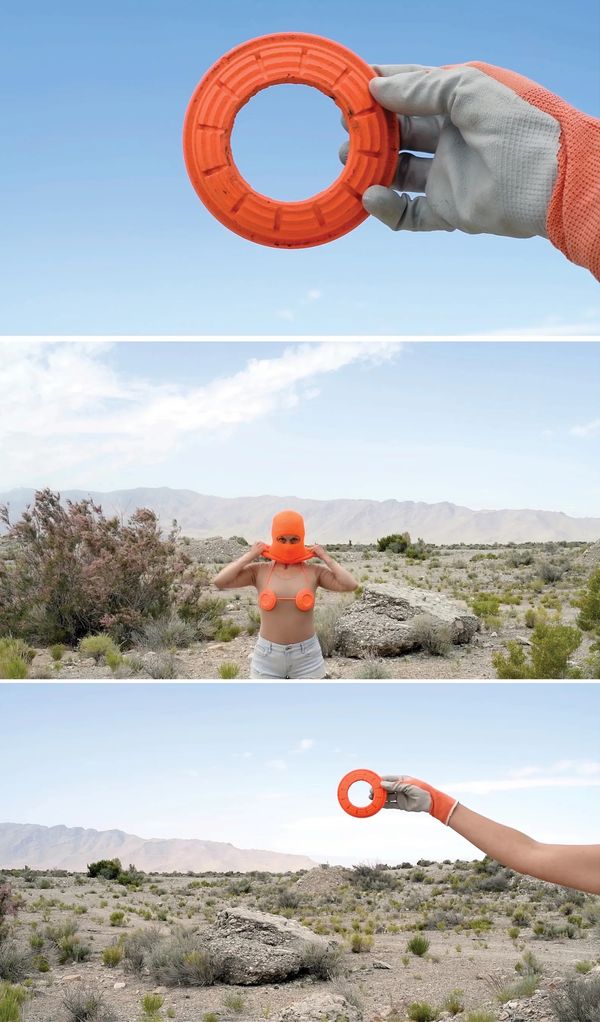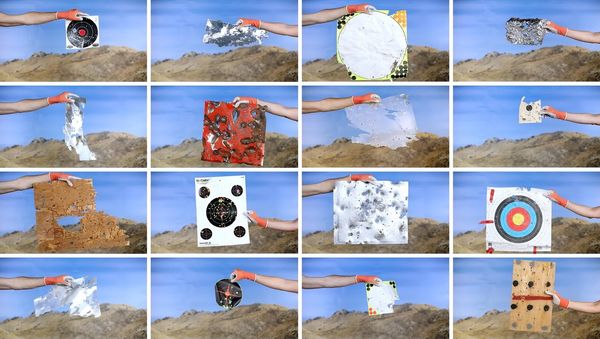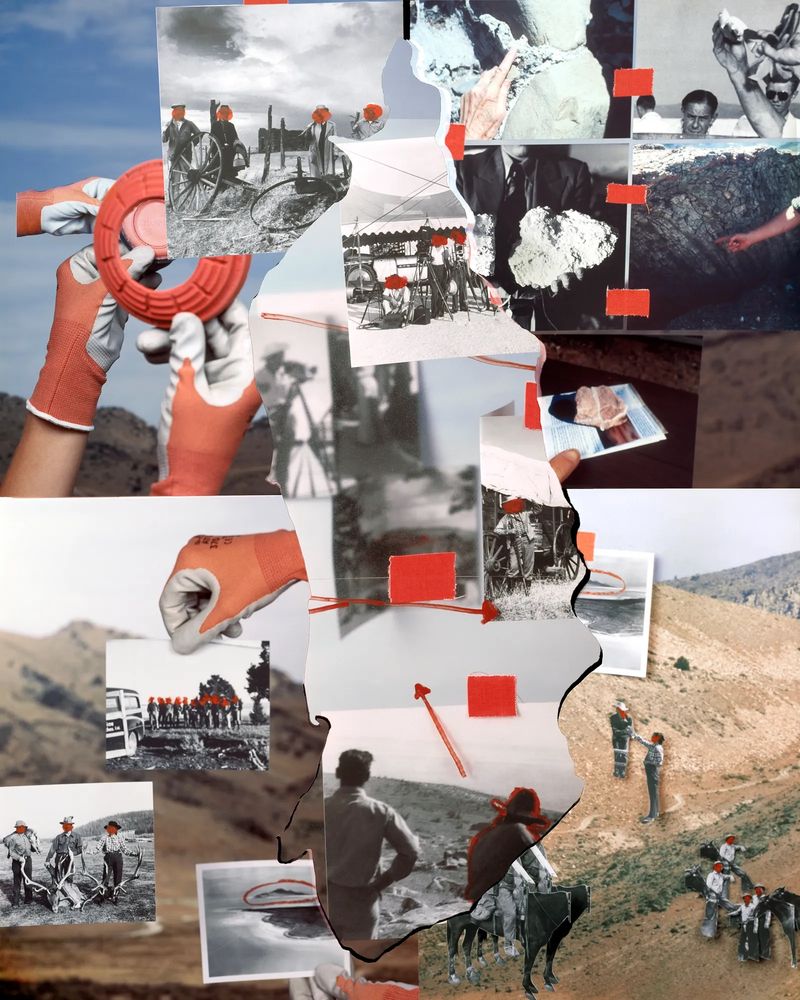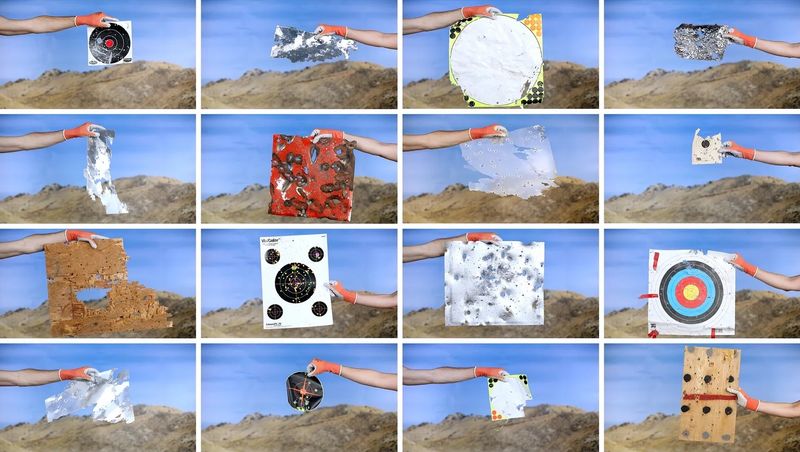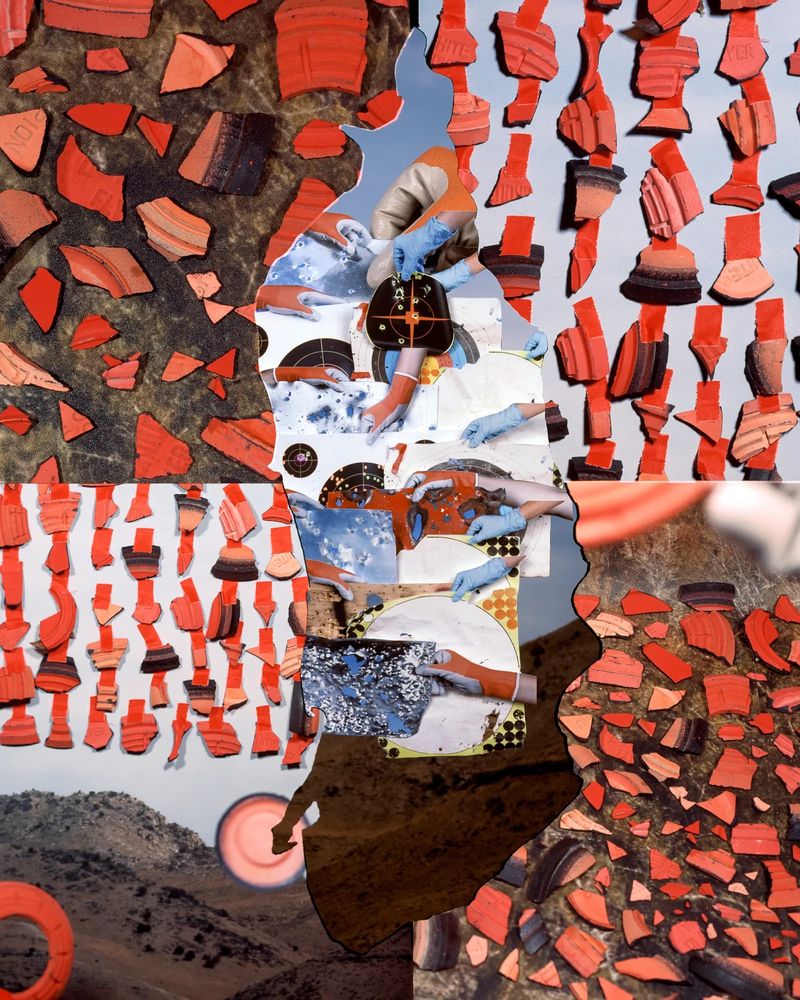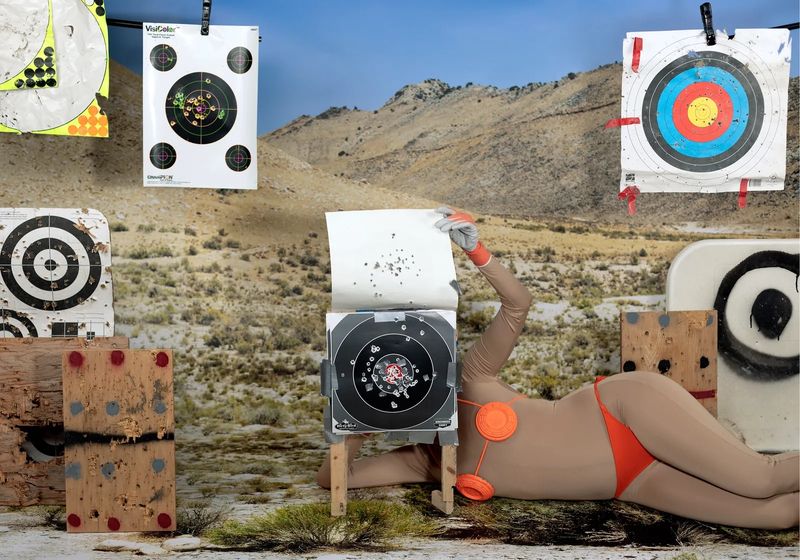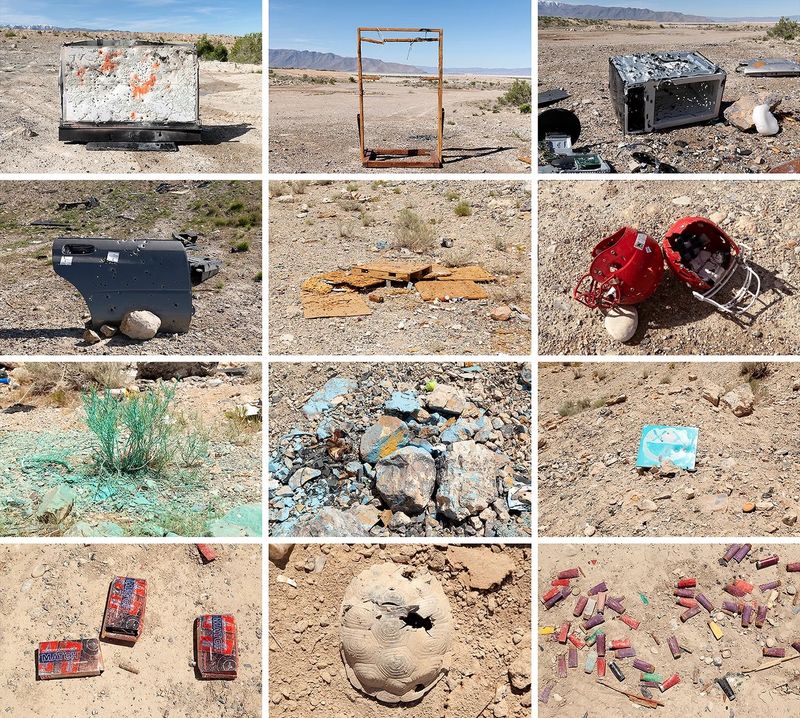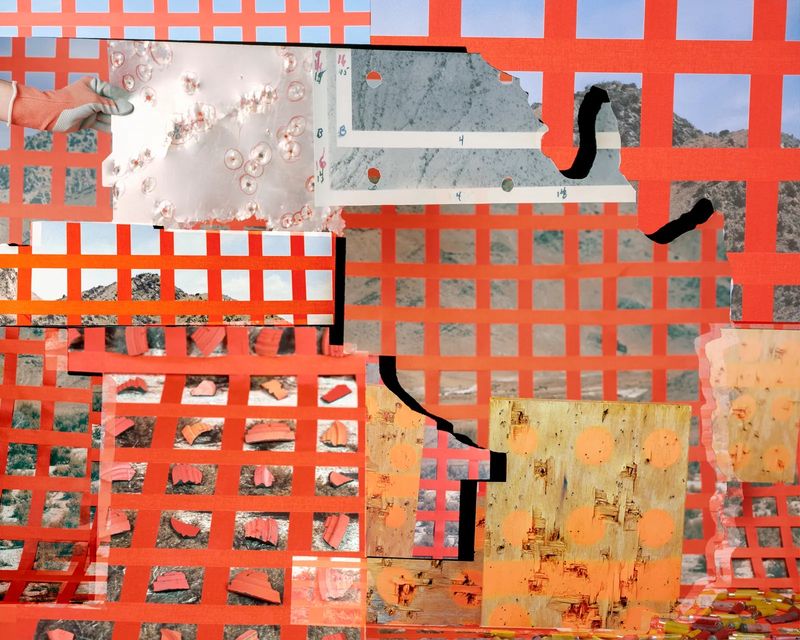Jaclyn Wright: Ecological and Historical Frontiers of the American West
-
Published6 Jun 2024
-
Author
In High Visibility (Blaze Orange), Wright strives to deepen understanding of the intricate ecological and historical narratives of the American West, advocating for a transition to more sustainable land practices.
Jaclyn Wright's journey from the Midwest to Salt Lake City marked not just a change in location, but a deep dive into the unfamiliar landscapes and land use practices of the American West. She immersed herself in exploring the Bureau of Land Management (BLM) sites, vast expanses of federal public land primarily found in the western and southwestern states. Her research honed in on the Great Salt Lake Desert, the vast, largely barren area spanning from Salt Lake City to West Wendover, Nevada, with a two-hour stretch of highway devoid of gas stations.
Amidst her explorations, Wright encountered unexpected scenes of litter strewn across the desert floor. What she initially mistook for illegal dumping grounds turned out to be informal shooting ranges, where old household items became targets for shooting. “People go there, bring their old stuff, and shoot guns at it. It's totally leisure based,” Wright says.
Despite the BLM's "leave no trace" policy, the landscape was marred with debris, including microwaves, tv sets, and car doors. Wright made it a mission to collect and confront this waste, using it as a focal point in her work to highlight the intersection of land use, environmental degradation, and leisure activities in the region. “People have these objects that they're just willing to obliterate with a gun,” she says. “I collect huge pieces of television screens, I've seen dishwashers and old refrigerators. I have an emergency door exit from a camper van.”
Venturing beyond the desert, Wright explored Stansbury Island, where the drying Great Salt Lake poses ecological threats compounded by heavy metal deposits in its bed. Approximately 85 miles southwest of Salt Lake City also lays the Dugway Proving Ground, a secretive site where the U.S. Department of Defense tests biological and chemical weapons, embedded within the land she traversed. This landscape, encompassing both public and private sectors, saw BLM land leased for mining and ranching, further exacerbating the climate crisis by diverting water from the Great Salt Lake. These interconnected factors are central themes in Jaclyn Wright's work, High Visibility, which won the 1st prize of the PhMuseum 2024 Photography Grant. Her work sheds light on the intricate environmental challenges confronting the region.
And amidst these challenges, Wright found symbolism in the vibrant orange clay pigeons dotting the desert landscape. Intrigued by their stark contrast against the natural backdrop, she began incorporating blaze orange into her work, symbolizing the complexities of land management in the U.S. Through her art — such as meticulous video installations and surreal imagery, all marked by a blend of humor and critical inquiry — Wright seeks to underscore the scale and impact of these discarded objects, sparking conversations about climate change, late capitalism and colonial legacies in the American West.
“I'm thinking about the use of the gun target shooting residue as a sort of symbol, not just about guns. It's really about the sort of violence that's happening to this landscape and the impact of that,” she says.
In her creative process, Wright employs contrasts to provoke deeper reflection on land use practices. The clay pigeon bikini, a whimsical yet poignant symbol, serves as a critique of hyper-femininity against the hyper-masculine landscape of shooting ranges. By mimicking Martha Rosler’s “Semiotics of the Kitchen,” Wright elevates discarded objects to confront viewers with the weight of their environmental impact.
“It was wanting to deal with that part of the work while also trying to add some lightness to the work, because I think humor is a way to deal with heavy topics,” she says.
Through her work, Wright aims to foster a greater understanding of the complex ecological and historical narratives shaping the American West, urging a shift towards more sustainable engagement with the land.
--------------
All photos © Jaclyn Wright, from the series High Visibility (Blaze Orange)
--------------
Jaclyn Wright is an American multi-disciplinary artist and educator. Her work incorporates archival images and in-camera collages using a large format view camera, performance, and photographic installations. Wright’s current work critically explores the culture of land use, legacies of settler colonialism, and late capitalism in the American West. Find her work on PhMuseum.
Lucia De Stefani is a writer and editor focusing on photography, illustration, and everything teens. She lives between New York and Italy. Find her on Instagram and Twitter.

